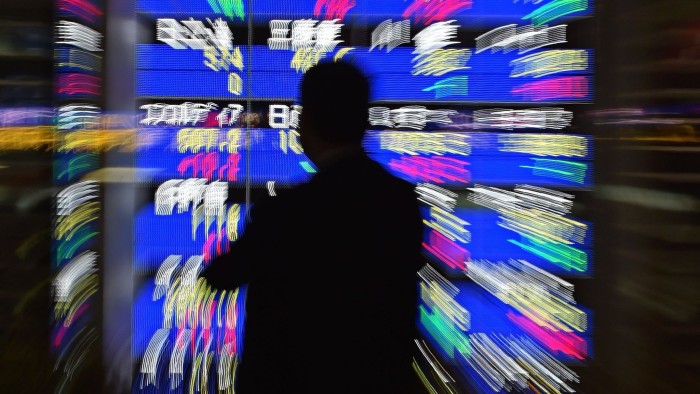Passive funds grow 230% to $6tn

Roula Khalaf, Editor of the FT, selects her favourite stories in this weekly newsletter.
Fund managers that attempt to beat the market are losing significant ground to cheaper rivals as investors shun stockpickers amid concerns over bad performance and high fees.
Assets managed in passive mutual funds, which provide lower-cost exposure to markets by tracking an index, have grown four times faster than traditional active products since 2007, according to figures from Morningstar, the data provider.
The findings reinforce concerns about active fund managers, which have been attacked by academics and consumer groups for not offering investors value for money.
Regulators are also scrutinising the active management industry. The UK watchdog is currently investigating fees as part of a wide-ranging review into the fund industry.
Hortense Bioy, European director of passive fund research at Morningstar, said the trend for passive management to grow faster than active investment is set to continue.
“The active management business is going to shrink at the benefit of passive. Those [active managers] that cannot prove they add value will disappear,” she said.
According to Morningstar, assets under management in passive mutual funds have grown 230 per cent globally, to $6tn, since 2007.
In contrast, assets held in active funds, where stock pickers try to beat the market, have grown 54 per cent, to $24tn.
This is a sharp change on past decades. The active fund management industry previously benefited from buoyant equity and fixed income markets, enabling fund houses to gather assets quickly and charge high fees in the process.
In the wake of the financial crisis, with low interest rates hitting returns, investors have been paying much closer attention to costs and switching high-fee active products for cheaper passive funds.
There have also been widespread concerns about the performance of active products. A study by S&P Dow Jones Indices recently found that almost every actively managed equity fund in Europe investing in global, emerging and US markets failed to beat its benchmark over the past decade.
Stuart Dunbar, a partner at Baillie Gifford, the £123bn Scottish active fund manager, said investors are shifting to passive products because they are “losing faith in the active management industry”.
He said: “The [active management] industry will remain under pressure until, collectively, we achieve better results for clients.”
John Hailer, chief executive of the Americas and Asia for Natixis Global Asset Management, the $885bn asset manager, added: “[Many traditional active managers] do not understand that the market will not be the same as it was 10 or 20 years ago. A lot of them have not realised they need to change.”
Morningstar’s figures show that passive products achieved far greater growth than active mutual funds in every region around the world, except Latin America.
The passive industry remains much smaller than the active sector, although this gap is narrowing. In 2007, the active industry was 8.5 times larger than passive, but is now just four times bigger.
John James, managing director for Europe at Vanguard, the low-cost asset manager best known for its passive products, said passive funds will keep taking market share from active managers. “This is a story that will continue. People are looking to reduce the cost of investing,” he said.
Natixis, Baillie Gifford and Henderson Global Investors, an active fund house, all said active managers still have an important role to play in the fund industry.
Mr Dunbar said: “The active management industry is too big. The good managers need to continue to be good and get the word out.
“And those who are not [offering funds that are truly actively managed and provide returns net of fees] need to go.”
Greg Jones, managing director for distribution at Henderson, added that active funds “can still thrive” if they meet the objectives of clients.
“In the industry globally, there is space for both active and passive,” he said.
Comments